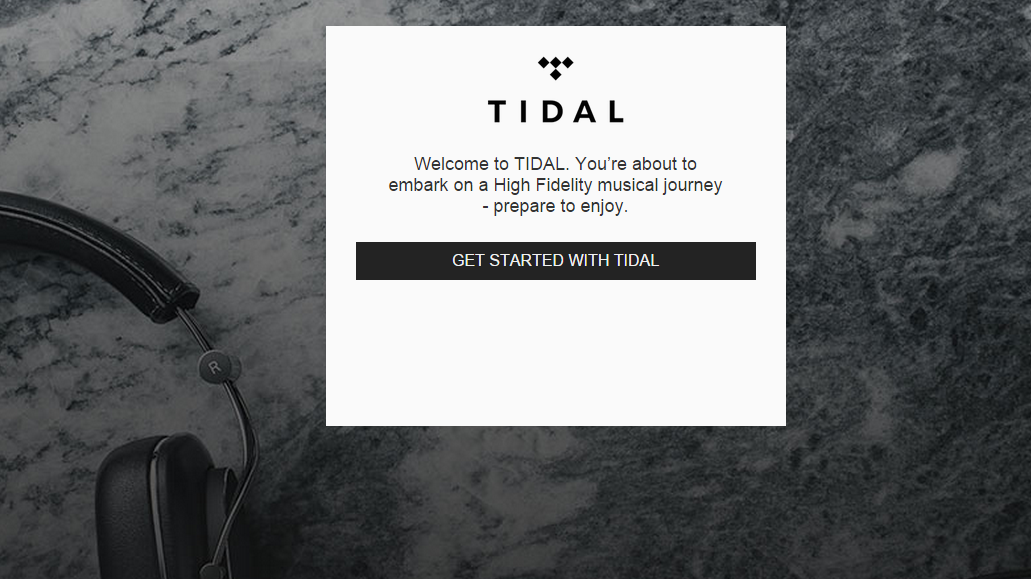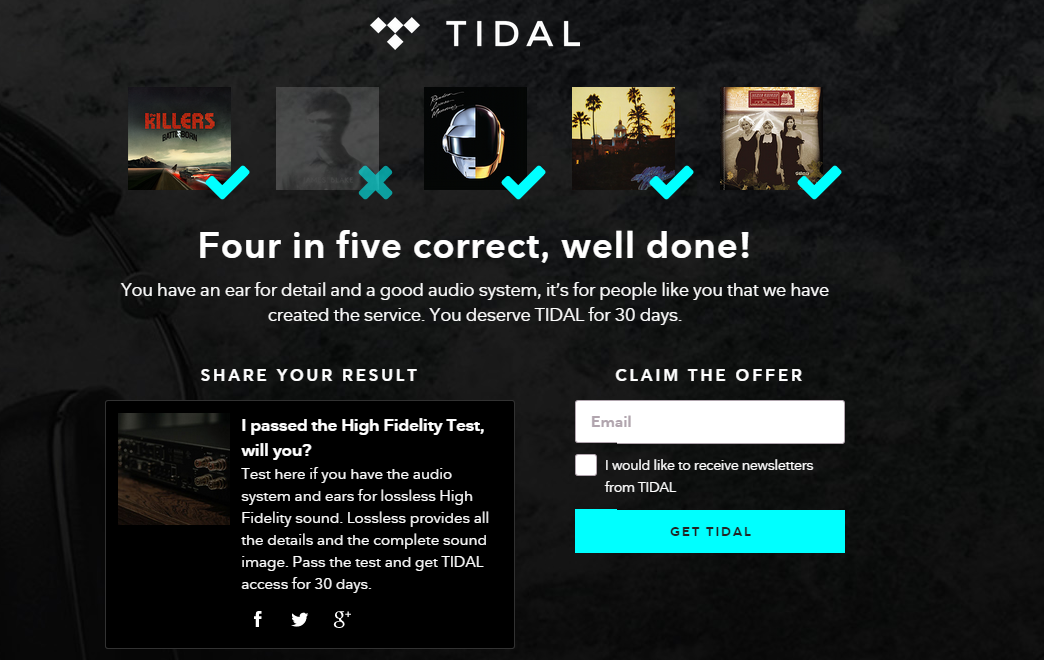
Jay-Z’s new music streaming service Tidal has been one of the most insanely massive failures-to-launch of the 2010s. Subscriber rates are miniscule, its infamous press conference had a level of cringe-worthy audience disinterest not seen since the Xbox One reveal, and the reception towards it upon launch was so universally negative that it actually skyrocketed the user rates of two of its biggest competitors, Spotify and Pandora. Tidal is now the Ello of music streaming services, but is there more to the service itself than people are giving it credit for?
I’ve been an open and huge supporter of the new streaming generation for months now, even if it isn’t the easiest life decision to try and dignify. As a consumer, the convenience and grand scope of a service like Spotify is nothing short of fantastic, and it’s pretty easy to make a service like Spotify your go-to whenever you want to listen to a particular piece of music, considering they have pretty much any and every piece of music you could ever want to listen to at the click of a mouse.
Though much justified criticism has been thrown at the current streaming service climate for the few dollars its figureheads pay artists for millions of streams, I’m of the belief that it has potential to be a stable and dependable future for musicians, but the lack of acceptance and widespread use of these services, combined with the lack of competition that offers more to artists, is what’s ultimately holding it back. This judgment call is part of the reason I was actually somewhat interested in Tidal when I first heard about it, because it seemed to be making an effort to up the ante on how much artists can be compensated if their work gets a lot of streams.
For those not familiar, Tidal is a new streaming service that is making no bones about its attempt to trump Spotify as the new alpha male of music streaming. In their aforesaid press conference, one of their opening lines expressly states that Tidal is “the path ahead” and “the future of music”. Its service offers a handful of features that it claims will push the medium forward, including editorial content, lossless “CD quality” audio, and curated editorial content, among others.
One of its most focal attributes, though, is that it will pay artists for streams of their work more than any of its streaming competitors. It hasn’t been officially disclosed just how much the artists are making (with the exception of a questionable article on Digital Music News), but considering the service’s most feature-laden edition costs $20 – no, seriously, $20 – a month, one would assume at least some of that doubled subscription fee would go towards paying record labels more than their competing services, whose premium editions tend to cost half or less of that amount. To perhaps drive the point home that Tidal is a platform for artists and musicians as well, it’s co-owned by some of the biggest names on the planet, including Jay-Z, Beyoncé, Kanye West, Madonna, Jack White, Deadmau5, Daft Punk, and a handful of other household celebrity musicians. It’s certainly an impressive set of names, but since it hasn’t been made particularly clear what Tidal being co-owned by these people actually means, it’s hard to see it as anything more than a flashy way to draw in people with name recognition.
I’ve been a Spotify Premium subscriber since December of last year, and I think it’s a very good platform, although it’s definitely not perfect, and despite having done so for months now, I’m not entirely convinced it’s worth forking out $10 a month for it, for not a whole lot of exceptional features beyond higher quality audio, portable capabilities and not getting an advertisement every few songs. By contrast, Tidal costs $20 a month, which is absolutely ridiculous to me, as I figured there could be nothing that could be worth paying $240 a year for it. But I’m not unwilling to give it a fair shot, and since Tidal is boasting outright that it’s the future of music streaming, I figure there have to be some great extra features like exclusive content or a larger emphasis on artist discovery or a button that makes your device spontaneously disgorge Pretzel M&M’s – really anything to justify spending the cost of four back-alley blowjobs on a service that’s now the streaming equivalent of Carrie White. I consider myself to be a modernist at heart, so I thought I’d use the free month that “the future of streaming” provides to fairly judge what the service has to offer, and determine whether or not I think it’s worth $20 a month.
Before I signed up for Tidal, I had a go at its ‘High Fidelity Test’, which tests the listener with five different songs played at different bitrates and has them guess which is the high-quality file to see if their audio system and ears can tell the difference between them and see if the listener would really benefit from Tidal’s heavily-touted lossless audio. I scored 80% on the test, which was cause for it to start showering me with hilariously patronising praise, as if it was outright begging for me to slip it a Jackson. After it all but whispered in my ear in its most seductive voice whilst suggestively squishing its tits together that it specifically made Tidal for me, I knew this was going to be an exhilarating, but exhaustive relationship, and made my account posthaste.
Prior to diving ears-first into Tidal, I decided to make a list of helpful questions that I figured needed to be answered in the month that I was there that no other article I’ve read regarding Tidal has been able to answer:
- Does Tidal actually offer more features than direct competitors Spotify or Pandora, or at least as many?
- Does the touted “lossless audio” actually make a significant enough difference to benefit from it over its competitors?
- Does Tidal push the envelope of the breadth of music streaming services further like it so desperately claims it is, or does it just superficial and stagnant?
- Is the selection of music available for streaming on Tidal more than or at least as much as Spotify or Pandora?
- And most importantly, should you, the music fan reading this article, start forking out $240 a year for this platform?




